Pricing your products and services can be tough. Set prices too high, and you miss out on valuable sales. Set them too low, and you miss out on valuable revenue.
Thankfully, pricing doesn’t have to be a sacrifice or a shot in the dark. There are dozens of pricing models and strategies that can help you better understand how to set the right prices for your audience and revenue goals.
That’s why we’ve created this guide.
Whether you’re a business beginner or a pricing pro, the tactics and strategies in this guide will get you comfortable with pricing your products. Bookmark this guide for later and use the chapter links to jump around to sections of interest.
Pricing Strategy
A pricing strategy is a model or method used to establish the best price for a product or service. It helps you choose prices to maximize profits and shareholder value while considering consumer and market demand.
If only pricing was as simple as its definition — there’s a lot that goes into the process.
Pricing strategies account for many of your business factors, like revenue goals, marketing objectives, target audience, brand positioning, and product attributes. They’re also influenced by external factors like consumer demand, competitor pricing, and overall market and economic trends.
It’s not uncommon for entrepreneurs and business owners to skim over pricing. They often look at the cost of their products (COGS), consider their competitor’s rates, and tweak their own selling price by a few dollars. While your COGS and competitors are important, they shouldn’t be at the center of your pricing strategy.
The best pricing strategy maximizes your profit and revenue.
Before we talk about pricing strategies, let’s review an important pricing concept that will apply regardless of what strategies you use.
Price Elasticity of Demand
Price elasticity of demand is used to determine how a change in price affects consumer demand.
If consumers still purchase a product despite a price increase (such as cigarettes and fuel) that product is considered inelastic.
On the other hand, elastic products suffer from pricing fluctuations (such as cable TV and movie tickets).
You can calculate price elasticity using the formula:
% Change in Quantity ÷ % Change in Price = Price Elasticity of Demand
The concept of price elasticity helps you understand whether your product or service is sensitive to price fluctuations. Ideally, you want your product to be inelastic — so that demand remains stable if prices do fluctuate.
Cost, Margin, & Markup in Pricing
To choose a pricing strategy, it’s also essential to understand the role of cost, margin, and markup — especially if you’d like your pricing to be cost-based. Let’s dive into the definition for each.
Cost
Cost refers to the fees you incur from manufacturing, sourcing, or creating the product you sell. That includes the materials themselves, the cost of labor, the fees paid to suppliers, and even the losses. Cost doesn’t include overhead and operational expenses such as marketing, advertising, maintenance, or bills.
Margin
Margin (in this case, gross margin) refers to the amount your business earns after you subtract manufacturing costs.
Markup
Markup refers to the additional amount you charge for your product over the production and manufacturing fees.
Now, let’s cover some common pricing strategies. As we do so, it’s important to note that these aren’t necessarily standalone strategies — many can be combined when setting prices for your products and services.
Types of Pricing Strategies
- Competition-Based Pricing
- Cost-Plus Pricing
- Dynamic Pricing
- High-Low Pricing
- Penetration Pricing
- Skimming Pricing
- Value-Based Pricing
- Psychological Pricing
- Geographic Pricing
Now, let’s dive into the descriptions of each pricing strategy — many of which are included in the template below — so you can learn about what makes each of them unique.
Download Template
1. Competition-Based Pricing Strategy
Competition-based pricing is also known as competitive pricing or competitor-based pricing. This pricing strategy focuses on the existing market rate (or going rate) for a company’s product or service; it doesn’t take into account the cost of their product or consumer demand.
Instead, a competition-based pricing strategy uses the competitors’ prices as a benchmark. Businesses who compete in a highly saturated space may choose this strategy since a slight price difference may be the deciding factor for customers.
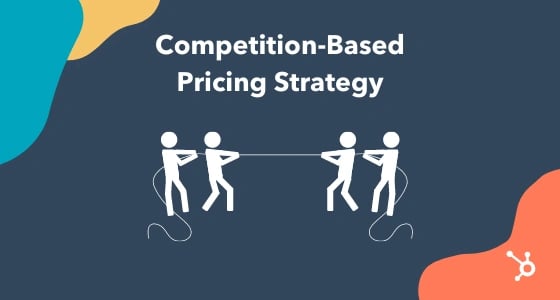
With competition-based pricing, you can price your products slightly below your competition, the same as your competition, or slightly above your competition. For example, if you sold marketing automation software, and your competitors’ prices ranged from $19.99 per month to $39.99 per month, you’d choose a price between those two numbers.
Whichever price you choose, competitive pricing is one way to stay on top of the competition and keep your pricing dynamic.
Competition-Based Pricing Strategy in Marketing
Consumers are primarily looking for the best value which isn’t always the same as the lowest price. Pricing your products and services competitively in the market can put your brand in a better position to win a customer’s business. Competitive pricing works especially well when your business offers something the competition doesn’t — like exceptional customer service, a generous return policy, or access to exclusive loyalty benefits.
2. Cost-Plus Pricing Strategy
A cost-plus pricing strategy focuses solely on the cost of producing your product or service, or your COGS. It’s also known as markup pricing since businesses who use this strategy “markup” their products based on how much they’d like to profit.
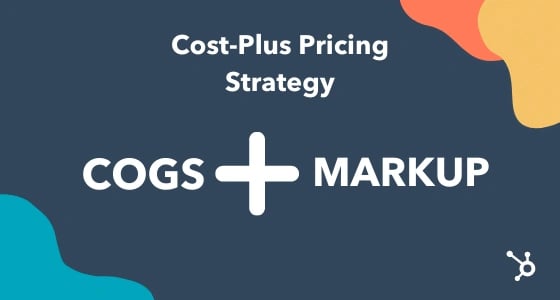
To apply the cost-plus method, add a fixed percentage to your product production cost. For example, let’s say you sold shoes. The shoes cost $25 to make, and you want to make a $25 profit on each sale. You’d set a price of $50, which is a markup of 100%.
Cost-plus pricing is typically used by retailers who sell physical products. This strategy isn’t the best fit for service-based or SaaS companies as their products typically offer far greater value than the cost to create them.
Cost-Plus Pricing Strategy in Marketing
Cost-plus pricing works well when the competition is pricing using the same model. It won’t help you attract new customers if your competition is working to acquire customers rather than growing profits. Before executing this strategy, complete a pricing analysis that includes your closest competitors to make sure this strategy will help you meet your goals.
3. Dynamic Pricing Strategy
Dynamic pricing is also known as surge pricing, demand pricing, or time-based pricing. It’s a flexible pricing strategy where prices fluctuate based on market and customer demand.
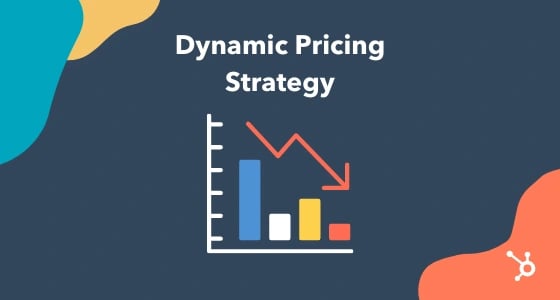
Hotels, airlines, event venues, and utility companies use dynamic pricing by applying algorithms that consider competitor pricing, demand, and other factors. These algorithms allow companies to shift prices to match when and what the customer is willing to pay at the exact moment they’re ready to make a purchase.
Dynamic Pricing Strategy in Marketing
Dynamic pricing can help keep your marketing plans on track. Your team can plan for promotions in advance and configure the pricing algorithm you use to launch the promotion price at the perfect time. You can even A/B test dynamic pricing in real-time to maximize your profits.
4. High-Low Pricing Strategy
A high-low pricing strategy is when a company initially sells a product at a high price but lowers that price when the product drops in novelty or relevance. Discounts, clearance sections, and year-end sales are examples of high-low pricing in action — hence the reason why this strategy may also be called a discount pricing strategy.
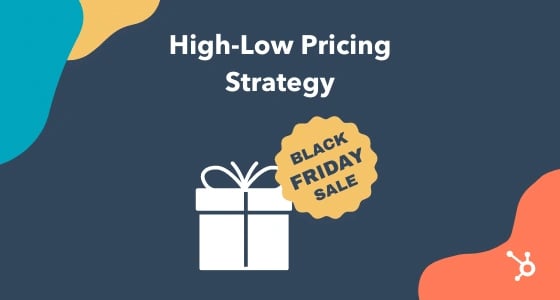
High-low pricing is commonly used by retail firms that sell seasonal items or products that change often, such as clothing, decor, and furniture. What makes a high/low pricing strategy appealing to sellers? Consumers enjoy anticipating sales and discounts, hence why Black Friday and other universal discount days are so popular.
High-Low Pricing Strategy in Marketing
If you want to keep the foot traffic steady in your stores year-round, a high-low pricing strategy can help. By evaluating the popularity of your products during particular periods throughout the year, you can leverage low pricing to increase sales during traditionally slow months.
5. Penetration Pricing Strategy
Contrasted with skimming pricing, a penetration pricing strategy is when companies enter the market with an extremely low price, effectively drawing attention (and revenue) away from higher-priced competitors. Penetration pricing isn’t sustainable in the long run, however, and is typically applied for a short time.
This pricing method works best for brand new businesses looking for customers or for businesses that are breaking into an existing, competitive market. The strategy is all about disruption and temporary loss … and hoping that your initial customers stick around as you eventually raise prices.

(Another tangential strategy is loss leader pricing, where retailers attract customers with intentionally low-priced items in hopes that they’ll buy other, higher-priced products, too. This is precisely how stores like Target get you — and me.)
Penetration Pricing Strategy in Marketing
Penetration pricing has similar implications as freemium pricing — the money won’t come in overnight. But with enough value and a great product or service, you could continue to make money and scale your business as you increase prices. One tip for this pricing strategy is to market the value of the products you sell and let price be a secondary point.
6. Skimming Pricing Strategy
A skimming pricing strategy is when companies charge the highest possible price for a new product and then lower the price over time as the product becomes less and less popular. Skimming is different from high-low pricing in that prices are lowered gradually over time.
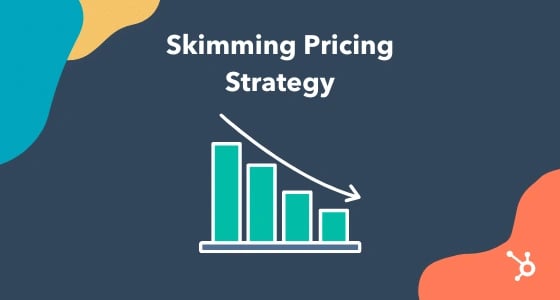
Technology products, such as DVD players, video game consoles, and smartphones, are typically priced using this strategy as they become less relevant over time. A skimming pricing strategy helps recover sunk costs and sell products well beyond their novelty, but the strategy can also annoy consumers who bought at full price and attract competitors who recognize the “fake” pricing margin as prices are lowered.
Skimming Pricing Strategy in Marketing
Skimming pricing strategy can work well if you sell products that have products with varying life cycle lengths. One product may come in and out of popularity quickly so you have a short time to skim your profits in the beginning stages of the life cycle. On the flip side, a product that has a longer life cycle can stay at a higher price for more time. You’ll be able to maintain your marketing efforts for each product more effectively without constantly adjusting your pricing across every product you sell.
7. Value-Based Pricing Strategy
A value-based pricing strategy is when companies price their products or services based on what the customer is willing to pay. Even if it can charge more for a product, the company decides to set its prices based on customer interest and data.
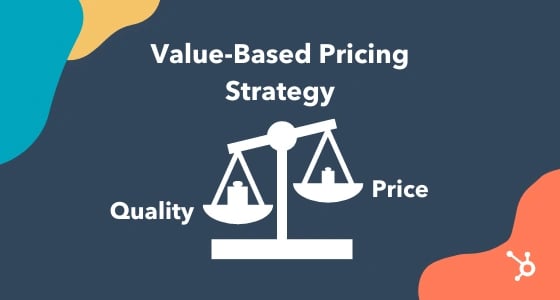
If used accurately, value-based pricing can boost your customer sentiment and loyalty. It can also help you prioritize your customers in other facets of your business, like marketing and service.
On the flip side, value-based pricing requires you to constantly be in tune with your various customer profiles and buyer personas and possibly vary your prices based on those differences.
Value-Based Pricing Strategy in Marketing
Marketing to your customers should always lead with value, so having a value-based pricing model should help strengthen the demand for your products and services. Just be sure that your audiences are distinct enough in what they’re willing to pay for — you don’t want to run into trouble by charging more or less based on off-limits criteria.
8. Psychological Pricing Strategy
Psychological pricing is what it sounds like — it targets human psychology to boost your sales.
For example, according to the “9-digit effect“, even though a product that costs $99.99 is essentially $100, customers may see this as a good deal simply because of the “9” in the price.
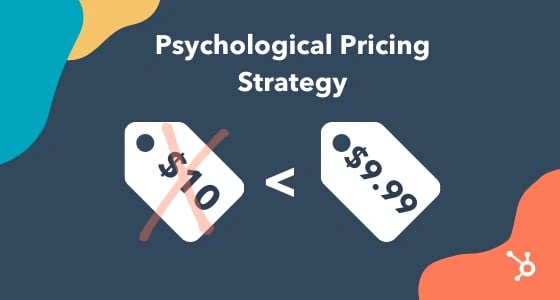
Another way to use psychological pricing would be to place a more expensive item directly next to (either, in-store or online) the one you’re most focused on selling. Or offer a “buy one, get one 50% off (or free)” deal that makes customers feel as though the circumstances are too good to pass up on.
And lastly, changing the font, size, and color of your pricing information on and around your products has also been proven, in various instances, to boost sales.
Psychological Pricing Strategy in Marketing
Psychological pricing strategy requires an intimate understanding of your target market to yield the best results. If your customers are inclined to discounts and coupons, appealing to this desire through your marketing can help this product meet their psychological need to save money. If paying for quality is important to your audience, having the lowest price on the shelf might not help you reach your sales goals. Regardless of the motivations your customers have for paying a certain price for a product, your pricing and marketing should appeal to those motivations.
9. Geographic Pricing Strategy
Geographic pricing is when products or services are priced differently depending on geographical location or market.
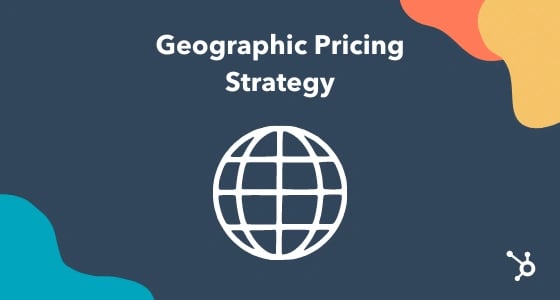
This strategy may be used if a customer from another country is making a purchase or if there are disparities in factors like the economy or wages (from the location in which you’re selling a good to the location of the person it is being sold to).
Geographic Pricing Strategy in Marketing
Marketing a geographically priced product or service is easy thanks to paid social media advertising. Segmenting by zip code, city, or even region can be accomplished at a low cost with accurate results. Even as specific customers travel or permanently move, your pricing model will remain the same which helps you maintain your marketing costs.
Like we said above, these strategies aren’t necessarily meant to stand alone. We encourage you to mix and match these methods as needed.
Below, we cover more specific pricing models for individual products.
Pricing Models
While your pricing strategy may determine how your company sets fees for its offerings overall, the below pricing models can help you set prices for specific product lines. Let’s take a look.
1. Freemium
A combination of the words “free” and “premium,” freemium pricing is when companies offer a basic version of their product hoping that users will eventually pay to upgrade or access more features.
Unlike cost-plus, freemium is a pricing model commonly used by SaaS and other software companies. They choose this model because free trials and limited memberships offer a peek into a software’s full functionality — and also build trust with a potential customer before purchase.

With freemium, a company’s prices must be a function of the perceived value of their products. For example, companies that offer a free version of their software can’t ask users to pay $100 to transition to the paid version. Prices must present a low barrier to entry and grow incrementally as customers are offered more features and benefits.
Freemium Pricing in Marketing
Freemium pricing may not make your business a lot of money on the initial acquisition of a customer, but it gives you access to the customer which is just as valuable. With access to their email inboxes, phone number, and any other contact information you gather in exchange for the free product, you can nurture the customer into a brand loyal advocate with a worthwhile LTV.
2. Premium Pricing
Also known as prestige pricing and luxury pricing, a premium pricing model is when companies price their products high to present the image that their products are high-value, luxury, or premium. Prestige pricing focuses on the perceived value of a product rather than the actual value or production cost.
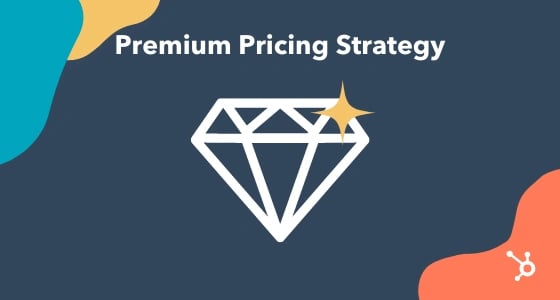
Prestige pricing is a direct function of brand awareness and brand perception. Brands that apply this pricing method are known for providing value and status through their products — which is why they’re priced higher than other competitors. Fashion and technology are often priced using this model because they can be marketed as luxurious, exclusive, and rare.
Premium Pricing in Marketing
Premium pricing is quite dependent upon the perception of your product within the market. There are a few ways to market your product in order to influence a premium perception of it including using influencers, controlling supply, and driving up demand.
3. Hourly Pricing
Hourly pricing, also known as rate-based pricing, is commonly used by consultants, freelancers, contractors, and other individuals or laborers who provide business services. Hourly pricing is essentially trading time for money. Some clients are hesitant to honor this pricing strategy as it can reward labor instead of efficiency.
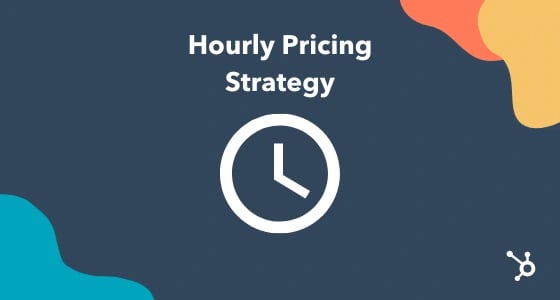
Hourly Pricing in Marketing
If your business thrives on quick, high-volume projects, hourly pricing can be just the incentive for customers to work with you. By breaking down your prices into hourly chunks, customers can make the decision to work with you based on a low price point rather than finding room in their budget for an expensive project-based commitment.
4. Bundle Pricing
Bundle pricing is when you offer (or “bundle”) two or more complementary products or services together and sell them for a single price. You may choose to sell your bundled products or services only as part of a bundle, or sell them as both components of bundles and individual products.
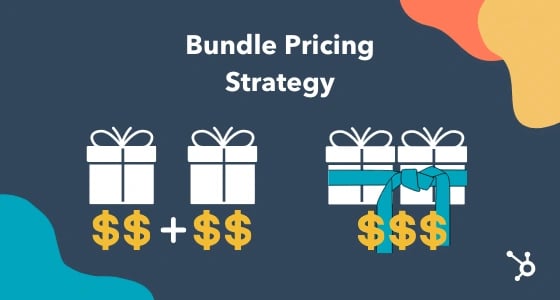
This is a great way to add value through your offerings to customers who are willing to pay extra upfront for more than one product. It can also help you get your customers hooked on more than one of your products faster.
Bundle Pricing in Marketing
Marketing bundle deals can help you sell more products than you would otherwise sell individually. It’s a smart way to upsell and cross-sell your offerings in a way that is beneficial for the customer and your revenue goals.
5. Project-Based Pricing
Project-based pricing is the opposite of hourly pricing — this approach charges a flat fee per project instead of a direct exchange of money for time. It is also used by consultants, freelancers, contractors, and other individuals or laborers who provide business services.
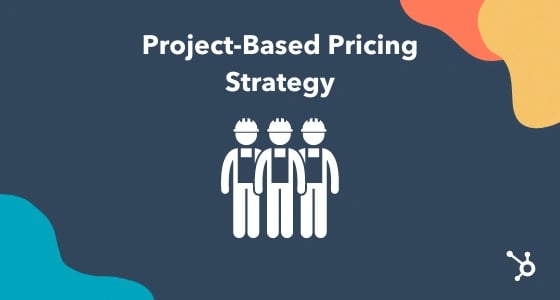
Project-based pricing may be estimated based on the value of the project deliverables. Those who choose this pricing model may also create a flat fee from the estimated time of the project.
Project-Based Pricing in Marketing
Leading with the benefits a customer will derive from working with your business on a project can make project-based pricing more appealing. Although the cost of the project may be steep, the one-time investment can be worth it. Your clients will know that they’ll be able to work with you until the project is completed rather than until their allotted hours are depleted.
6. Subscription Pricing
Subscription pricing is a common pricing model at SaaS companies, online retailers, and even agencies who offer subscription packages for their services.
Whether you offer flat rate subscriptions or tiered subscriptions, the benefits of this model are endless. For one, you have all but guaranteed monthly recurring revenue (MRR) and yearly recurring revenue. That makes it simpler to calculate your profits on a monthly basis. It also often leads to higher customer lifetime values.
The one thing to be wary of when it comes to subscription pricing is the high potential for customer churn. People cancel subscriptions all the time, so it’s essential to have a customer retention strategy in place to ensure clients keep their subscriptions active.
Subscription Pricing in Marketing
When marketing your subscription products, it’s essential to create buyer personas for each tier. That way, you know which features to include and what will appeal to each buyer. A general subscription that appeals to everyone won’t pull in anyone.
Even Amazon, which offers flat-rate pricing for its Prime subscription, includes a membership for students. That allows them to market the original Prime more effectively by creating a sense of differentiation.
Now, let’s discuss how to build a pricing strategy of your own liking.
How to Create a Pricing Strategy
1. Evaluate pricing potential.
You want to make a strategy that is optimal for your unique business. To begin, you need to evaluate your pricing potential. This is the approximate product or service pricing your business can potentially achieve in regard to cost, demand, and more.
Some factors that can affect your pricing potential include:
- Geographical market specifics
- Operating costs
- Inventories
- Demand fluctuations
- Competitive advantages and concerns
- Demographic data
We’ll dive deeper into demographic data in the next step.
2. Determine your buyer personas.
You have to price your product on the type of buyer persona that’s looking for it. When you look at your ideal customer, you’ll have to look at their:
- Customer Lifetime Value
- Willingness to Pay
- Customer Pain Points
To aid in this process, interview customers and prospects to see what they do and like, and ask for your sales team’s feedback on the best leads and their characteristics.
3. Analyze historical data.
Take a look at your previous pricing strategies. You can calculate the difference in closed deals, churn data, or sold product on different pricing strategies that your business has worked with before and look at which were the most successful.
4. Strike a balance between value and business goals.
When developing your pricing strategy, you want to make sure the price is good to your bottom line and your buyer personas. This compromise will better help your business and customer pool, with the intentions of:
- Increasing profitability
- Improving cash flow
- Market penetration
- Expanding market share
Increasing lead conversion
5. Look at competitor pricing.
You can’t make a pricing strategy without conducting research on your competitors’ offerings. You’ll have to decide between two main choices when you see the price difference for your same product or service:
- Beat your competitors’ price – If a competitor is charging more for the same offering as your brand, then make the price more affordable.
- Beat your competitors’ value – Also known as value-based pricing, you can potentially price your offering higher than your competitors if the value provided to the customer is greater.
To see the competition’s full product or service offering, conduct a full competitive analysis so you can see their strengths and weaknesses, and make your pricing strategy accordingly.
So we’ve gone over how to create a pricing strategy, now let’s discuss how to apply these steps to different businesses and industries.
Pricing Models Based on Industry or Business
Not every pricing strategy is applicable to every business. Some strategies are better suited for physical products whereas others work best for SaaS companies. Here are examples of some common pricing models based on industry and business.
Product Pricing Model
Unlike digital products or services, physical products incur hard costs (like shipping, production, and storage) that can influence pricing. A product pricing strategy should consider these costs and set a price that maximizes profit, supports research and development, and stands up against competitors.
👉🏼 We recommend these pricing strategies when pricing physical products: cost-plus pricing, competitive pricing, prestige pricing, and value-based pricing.
Digital Product Pricing Model
Digital products, like software, online courses, and digital books, require a different approach to pricing because there’s no tangible offering or unit economics (production cost) involved. Instead, prices should reflect your brand, industry, and overall value of your product.
👉🏼 We recommend using these pricing strategies when pricing digital products: competition-based pricing, freemium pricing, and value-based pricing.
Restaurant Pricing Model
Restaurant pricing is unique in that physical costs, overhead costs, and service costs are all involved. You must also consider your customer base, overall market trends for your location and cuisine, and the cost of food — as all of these can fluctuate.
👉🏼 We recommend using these pricing strategies when pricing at restaurants: cost-plus pricing, premium pricing, and value-based pricing.
Event Pricing Model
Events can’t be accurately measured by production cost (not unlike the digital products we discussed above). Instead, event value is determined by the cost of marketing and organizing the event as well as the speakers, entertainers, networking, and the overall experience — and the ticket prices should reflect these factors.
👉🏼 We recommend using these pricing strategies when pricing live events: competition-based pricing, dynamic pricing, and value-based pricing.
Services Pricing Model
Business services can be hard to price due to their intangibility and lack of direct production cost. Much of the service value comes from the service provider’s ability to deliver and the assumed caliber of their work. Freelancers and contractors, in particular, must adhere to a services pricing strategy.
👉🏼 We recommend using these pricing strategies when pricing services: hourly pricing, project-based pricing, and value-based pricing.
Nonprofit Pricing Model
Nonprofits need pricing strategies, too — a pricing strategy can help nonprofits optimize all processes so they’re successful over an extended period of time.
A nonprofit pricing strategy should consider current spending and expenses, the breakeven number for their operation, ideal profit margin, and how the strategy will be communicated to volunteers, licensees, and anyone else who needs to be informed. A nonprofit pricing strategy is unique because it often calls for a combination of elements that come from a few pricing strategies.
👉🏼 We recommend using these pricing strategies when pricing nonprofits: competitive pricing, cost-plus pricing, demand pricing, and hourly pricing.
Education Pricing Model
Education encompasses a wide range of costs that are important to consider depending on the level of education, private or public education, and education program/ discipline.
Specific costs to consider in an education pricing strategy are tuition, scholarships, additional fees (labs, books, housing, meals, etc.). Other important factors to note are competition among similar schools, demand (number of student applications), number and costs of professors/ teachers, and attendance rates.
👉🏼 We recommend using these pricing strategies when pricing education: competitive pricing, cost-based pricing, and premium pricing.
Real Estate Pricing Model
Real estate encompasses home value estimates, market competition, housing demand, and cost of living. There are other factors that play a role in real estate pricing models including potential bidding wars, housing estimates and benchmarks (which are available through real estate agents but also through free online resources like Zillow), and seasonal shifts in the real estate market.
👉🏼 We recommend using these pricing strategies when pricing real estate: competitive pricing, dynamic pricing, premium pricing, and value-based pricing.
Agency Pricing Model
Agency pricing models impact your profitability, retention rates, customer happiness, and how you market and sell your agency. When developing and evolving your agency’s pricing model, it’s important to take into consideration different ways to optimize it so you can determine the best way to boost the business’s profits.
👉🏼 We recommend using these pricing strategies when pricing agencies: hourly pricing, project-based pricing, and value-based pricing.
Manufacturing Pricing Model
The manufacturing industry is complex — there are a number of moving parts and your manufacturing pricing model is no different. Consider product evolution, demand, production cost, sale price, unit sales volume, and any other costs related to your process and product. Another key part to a manufacturing pricing strategy is understanding the maximum amount the market will pay for your specific product to allow for the greatest profit.
👉🏼 We recommend using these pricing strategies when pricing manufacturing: competitive pricing, cost-plus pricing, and value-based pricing.
Ecommerce Pricing Model
Ecommerce pricing models are how you determine the price at which you’ll sell your online products and what it’ll cost you to do so. Meaning, you must think about what your customers are willing to pay for your online products and what those products cost you to purchase and/or create. You might also factor in your online campaigns to promote these products as well as how easy it is for your customers to find similar products to yours on the ecommerce sites of your competitors.
👉🏼 We recommend using these pricing strategies when pricing ecommerce: competitive pricing, cost-based pricing, dynamic pricing, freemium pricing, penetration pricing, and value-based pricing.
Pricing Analysis
Pricing analysis is a process of evaluating your current pricing strategy against market demand. Generally, pricing analysis examines price independently of cost. The goal of a pricing analysis is to identify opportunities for pricing changes and improvements.
You typically conduct a pricing analysis when considering new product ideas, developing your positioning strategy, or running marketing tests. It’s also wise to run a price analysis once every year or two to evaluate your pricing against competitors and consumer expectations — doing so preemptively avoids having to wait for poor product performance.
How to Conduct a Pricing Analysis
1. Determine the true cost of your product or service.
To calculate the true cost of a product or service that you sell, you’ll want to recognize all of your expenses including both fixed and variable costs. Once you’ve determined these costs, subtract them from the price you’ve already set or plan to set for your product or service.
2. Understand how your target market and customer base respond to the pricing structure.
Surveys, focus groups, or questionnaires can be helpful in determining how the market responds to your pricing model. You’ll get a glimpse into what your target customers value and how much they’re willing to pay for the value your product or service provides.
3. Analyze the prices set by your competitors.
There are two types of competitors to consider when conducting a pricing analysis: direct and indirect.
Direct competitors are those who sell the exact same product that you sell. These types of competitors are likely to compete on price so they should be a priority to review in your pricing analysis.
Indirect competitors are those who sell alternative products that are comparable to what you sell. If a customer is looking for your product, but it’s out of stock or it’s out of their price range, they may go to an indirect competitor to get a similar product.
4. Review any legal or ethical constraints to cost and price.
There’s a fine line between competing on price and falling into legal and ethical trouble. You’ll want to have a firm understanding of price-fixing and predatory pricing while doing your pricing analysis in order to steer clear of these practices.
Analyzing your current pricing model is necessary to determine a new (and better!) pricing strategy. This applies whether you’re developing a new product, upgrading your current one, or simply repositioning your marketing strategy.
Next, let’s look at some examples of pricing strategies that you can use for your own business.
Pricing Strategy Examples
Dynamic Pricing Strategy: Chicago Cubs Freemium Pricing Strategy: HubSpot Penetration Pricing Strategy: Netflix Premium Pricing: AWAY Competitive Pricing Strategy: Shopify Project-Based Pricing Strategy: Courtney Samuel Events Value-Based Pricing Strategy: INBOUND Bundle Pricing: State Farm Geographic Pricing: Gasoline
Pricing models can be hard to visualize. Below, we’ve pulled together a list of examples of pricing strategies as they’ve been applied to everyday situations or businesses.
1. Dynamic Pricing Strategy: Chicago Cubs
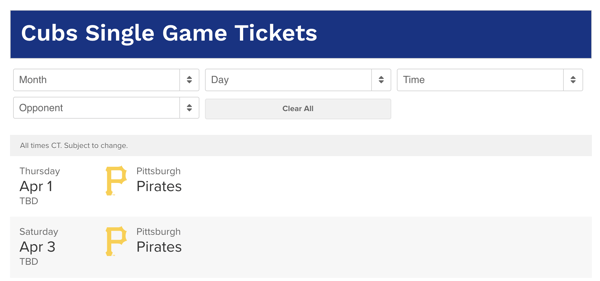
I live in Chicago five blocks away from Wrigley Field, and my friends and I love going to Cubs games. Finding tickets is always interesting, though, because every time we check prices, they’ve fluctuated a bit from the last time. Purchasing tickets six weeks in advance is always a different process than purchasing them six days prior — and even more sox pricing at the gate.
This is an example of dynamic pricing — pricing that varies based on market and customer demand. Prices for Cubs games are always more expensive on holidays, too, when more people are visiting the city and are likely to go to a game.
(Another prime example of dynamic pricing is INBOUND, for which tickets get more expensive as the event nears.)
2. Freemium Pricing Strategy: HubSpot
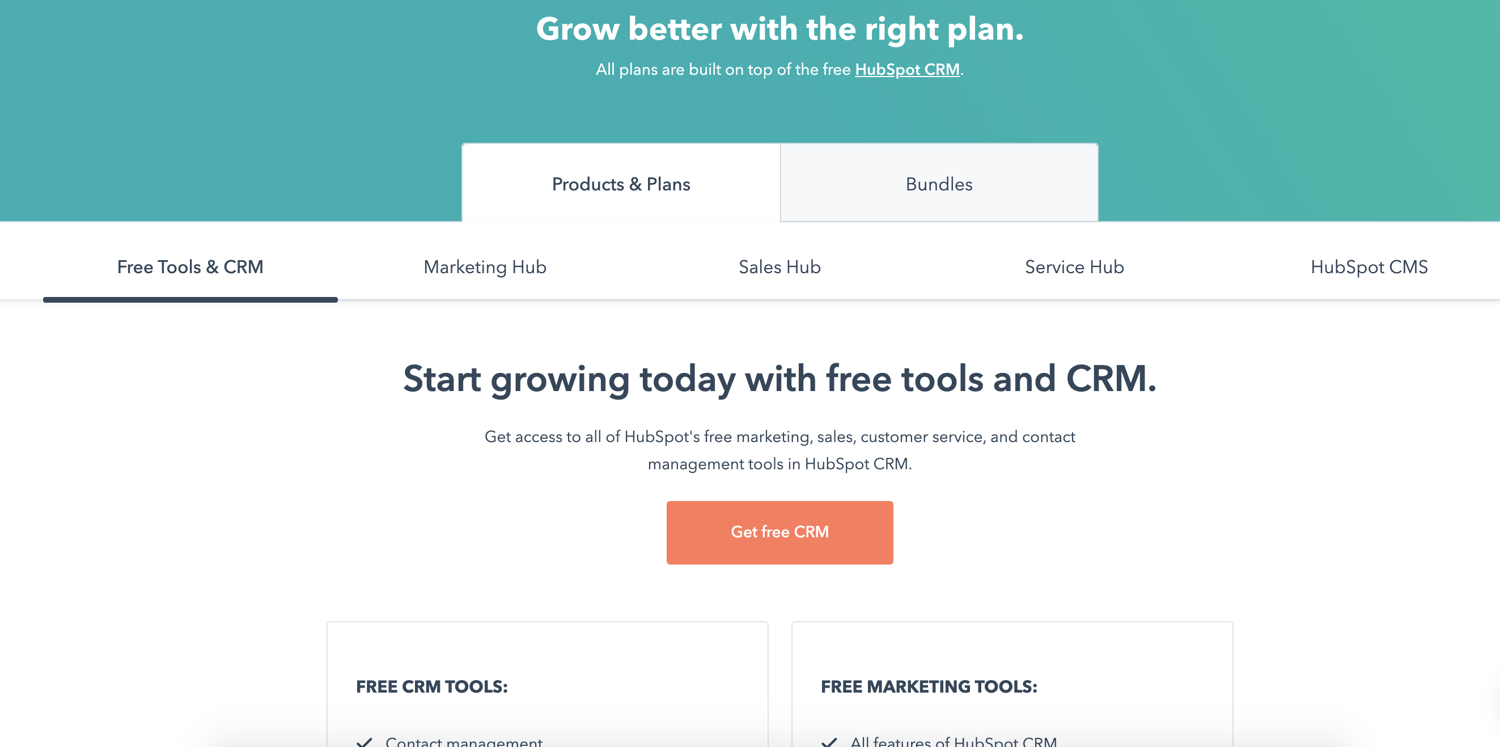
HubSpot is an example of freemium pricing at work. There’s a free version of the CRM for scaling businesses as well as paid plans for the businesses using the CRM platform that need a wider range of features.
Moreover, within those marketing tools, HubSpot provides limited access to specific features. This type of pricing strategy allows customers to acquaint themselves with HubSpot and for HubSpot to establish trust with customers before asking them to pay for additional access.
3. Penetration Pricing Strategy: Netflix
Netflix is a classic example of penetration pricing: entering the market at a low price (does anyone remember when it was $7.99?) and increasing prices over time. Since I joined a couple of years ago, I’ve seen a few price increase notices come through my own inbox.
Despite their increases, Netflix continues to retain — and gain — customers. Sure, Netflix only increases their subscription fee by $1 or $2 each time, but they do so consistently. Who knows what the fees will be in five or ten years?
4. Premium Pricing: AWAY
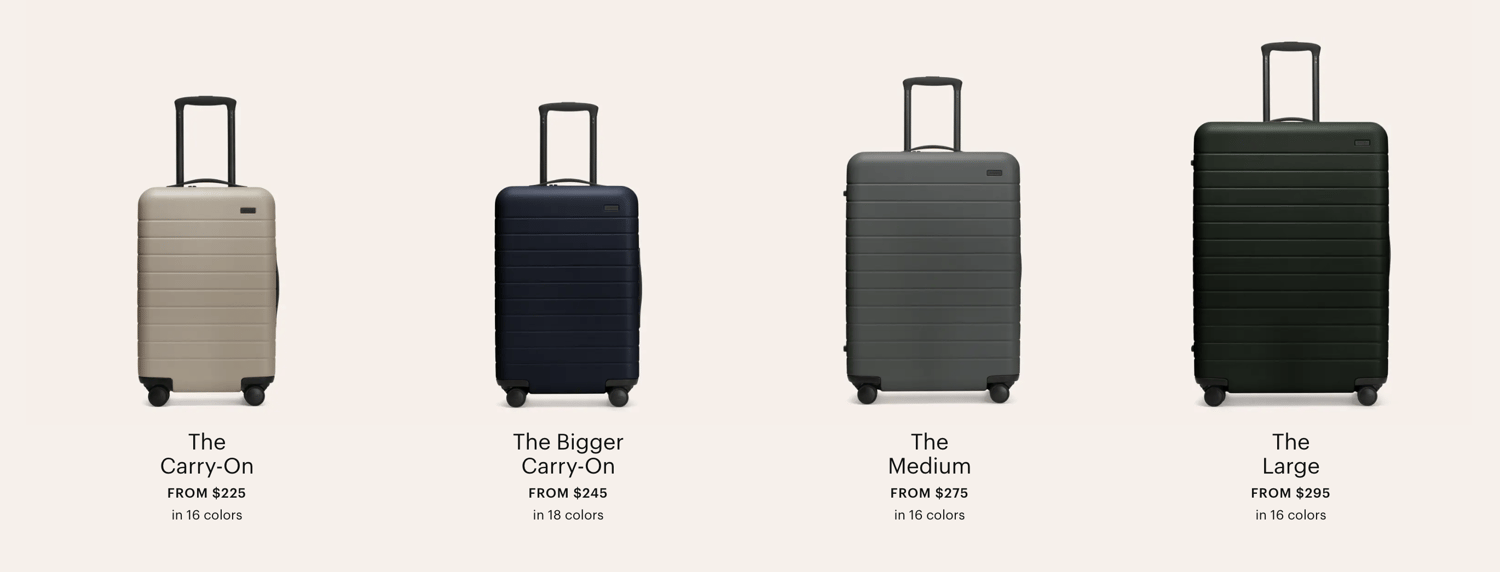
There are lots of examples of premium pricing strategies … Rolex, Tesla, Nike — you name it. One that I thought of immediately was AWAY luggage.
Does luggage need to be almost $500? I’d say no, especially since I recently purchased a two-piece Samsonite set for one-third the cost. However, AWAY has still been very successful even though they charge a high price for their luggage. This is because when you purchase AWAY, you’re purchasing an experience. The unique branding and the image AWAY portrays for customers make the value of the luggage match the purchase price.
5. Competitive Pricing Strategy: Shopify

Shopify is an ecommerce platform that helps businesses manage their stores and sell their products online. Shopify — which integrates with HubSpot — has a competitive pricing strategy.
There are a number of ecommerce software options on the market today — Shopify differentiates itself by the features they provide users and the price at which they offer them. They have three thoughtfully-priced versions of their product for customers to choose from with a number of customizable and flexible features.
With these extensive options tailored to any ecommerce business’ needs, the cost of Shopify is highly competitive and is often the same as or lower than other ecommerce platforms on the market today.
6. Project-Based Pricing Strategy: Courtney Samuel Events
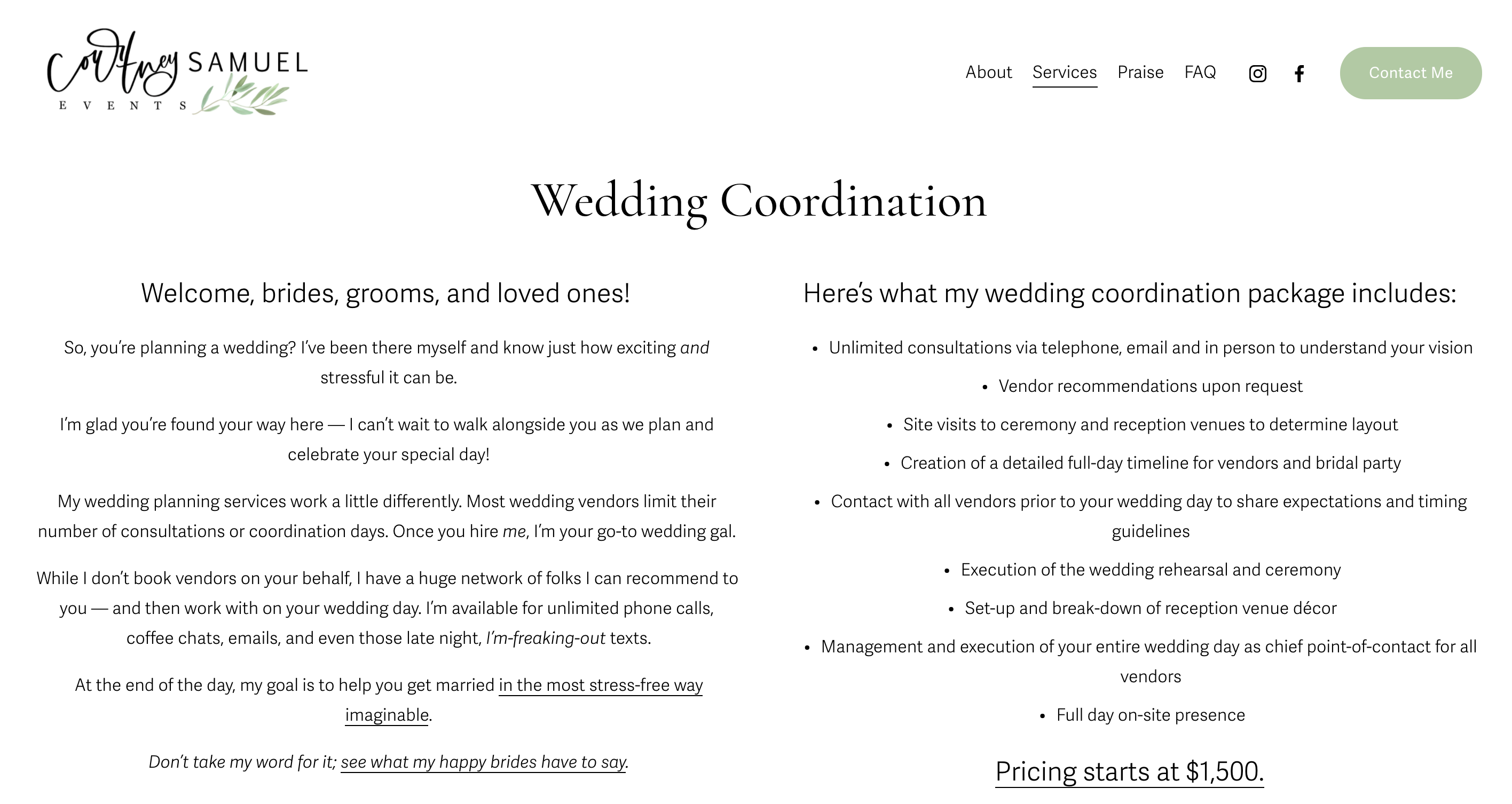
Anyone who’s planned a wedding knows how costly they can be. I’m in the midst of planning my own, and I’ve found that the bundled, project-based fees are the easiest to manage. For example, my wedding coordinator Courtney charges one flat fee for her services. This pricing approach focuses on the value of the outcome (e.g., an organized and stressless wedding day) instead of the value of the time spent on calls, projects, or meetings.
Because vendors like Courtney typically deliver a variety of services — wedding planning, day-of coordination, physical meetings, etc. — in addition to spending time answering questions and providing thoughtful suggestions, a project-based fee better captures the value of her work. Project-based pricing is also helpful for clients and companies who’d rather pay a flat fee or monthly retainer than deal with tracked hours or weekly invoices.
7. Value-Based Pricing Strategy: INBOUND
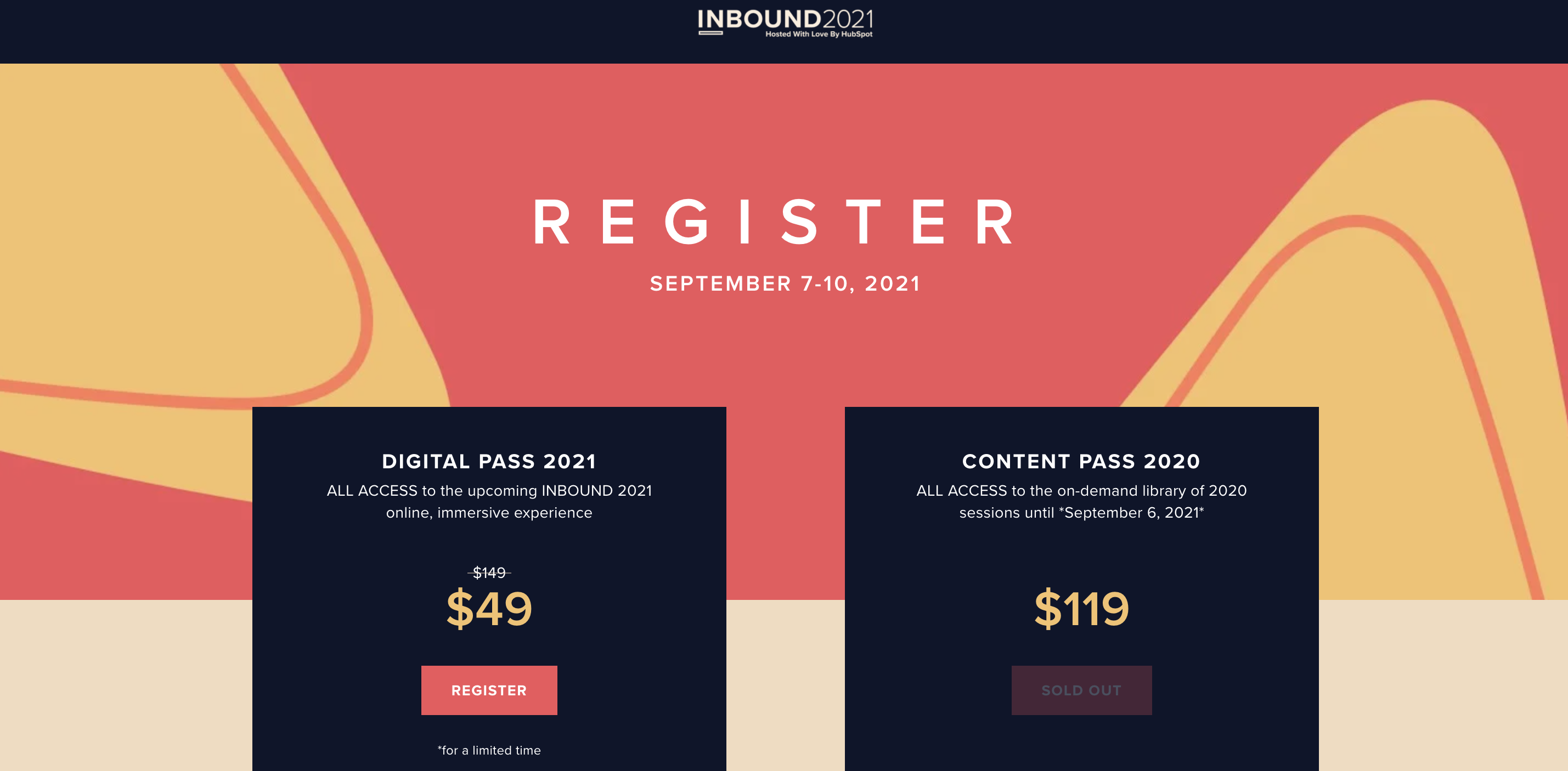
While INBOUND doesn’t leave the ultimate ticket price up to its attendees, it does provide a range of tickets from which customers can choose. By offering multiple ticket “levels,” customers can choose what experience they want to have based on how they value the event.
INBOUND tickets change with time, however, meaning this pricing strategy could also be considered dynamic (like the Cubs example above). As the INBOUND event gets closer, tickets tend to rise in price.
8. Bundle Pricing: State Farm
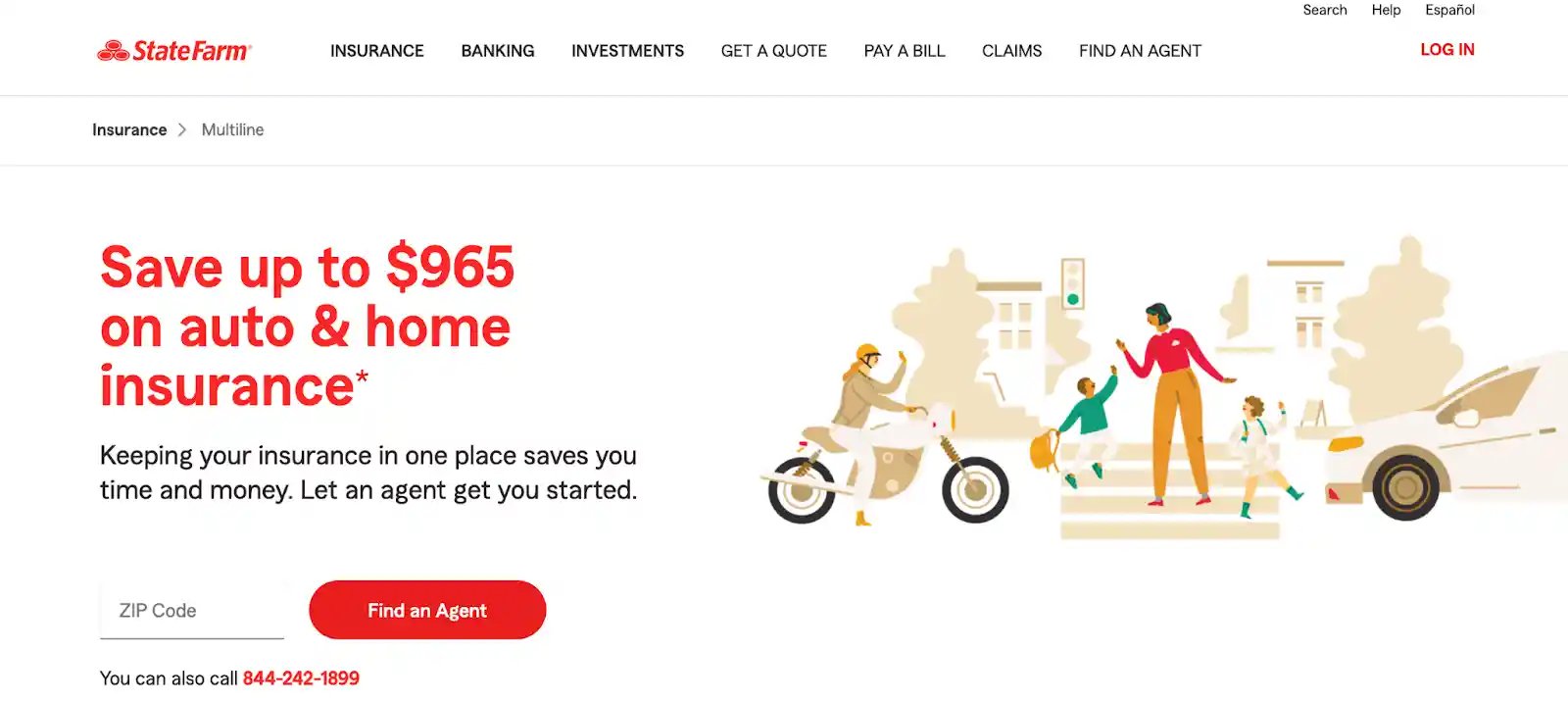
State Farm is known for its tongue-in-cheek advertisements and its bundle deals for home and auto insurance. You can receive a quote on one or the other, but getting a quote on both can save you money on your premiums.
State Farm benefits from bundle pricing by selling more policies, and consumers benefit by paying less than they normally would if they used two different insurance providers for home and auto coverage.
9. Geographic Pricing: Gasoline
Gasoline is notorious for having a wide range of prices around the world, but even within the United States, prices can vary by several dollars depending on the state you live in. In California for example, gas prices have consistently hovered around $3 in the summer months for the past 10 years. On the other hand, gas prices in Indiana have been in the $2 range during the same time period. Laws, environmental factors, and production cost all influence the price of gasoline in California which causes the geographic disparity in the cost of the fuel.
Get Your Pricing Strategy Right
Thinking about everything that goes into pricing can make your head spin: competitors, production costs, customer demand, industry needs, profit margins … the list is endless. Thankfully, you don’t have to master all of these factors at once.
Simply sit down, calculate some numbers (like your COGS and profit goals), and figure out what’s most important for your business. Start with what you need, and this will help you pinpoint the right kind of pricing strategy to use.
More than anything, though, remember pricing is an iterative process. It’s highly unlikely that you’ll set the right prices right away — it might take a couple of tries (and lots of research), and that’s OK.
Article by HubSpot



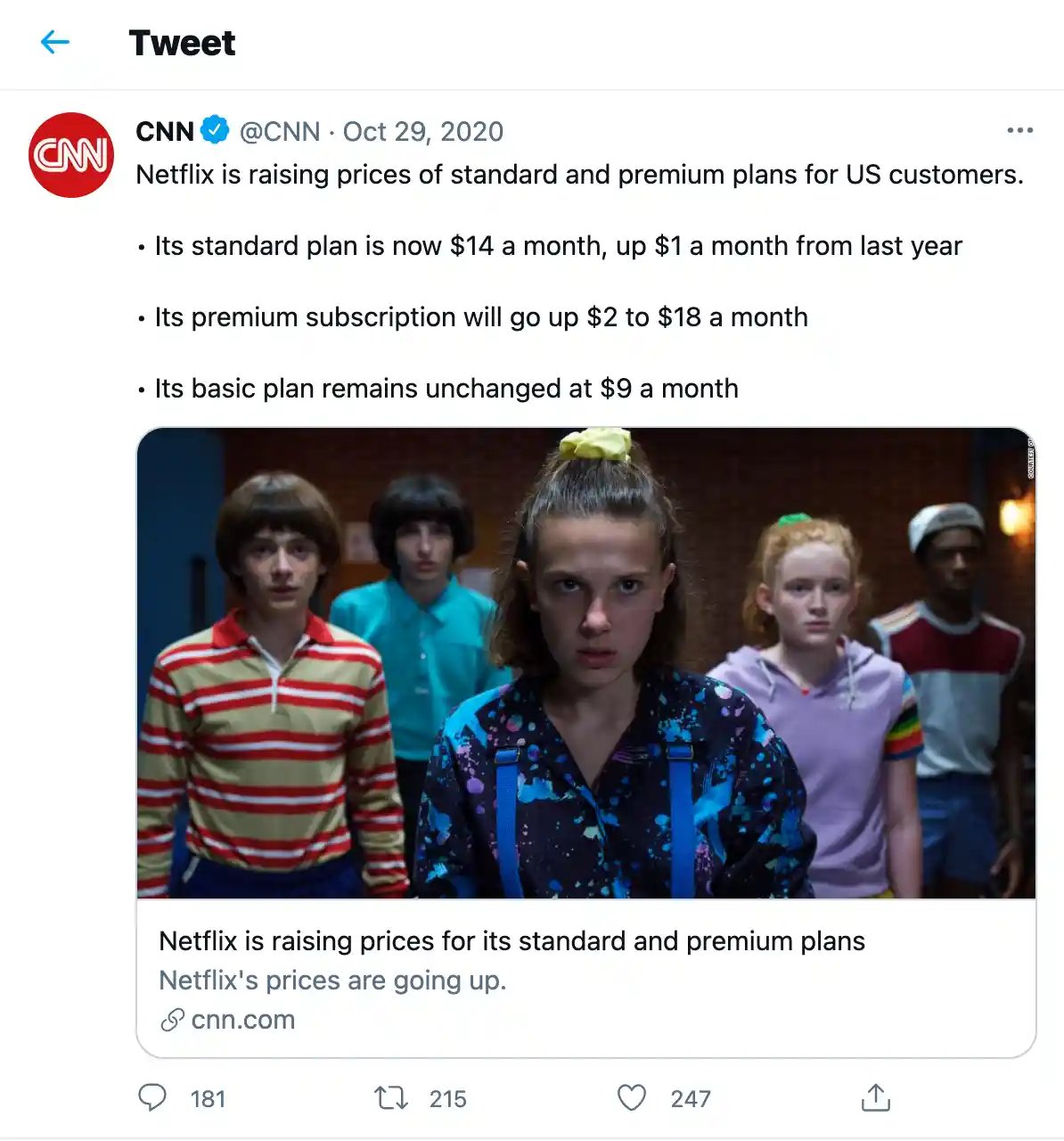 Image Source
Image Source